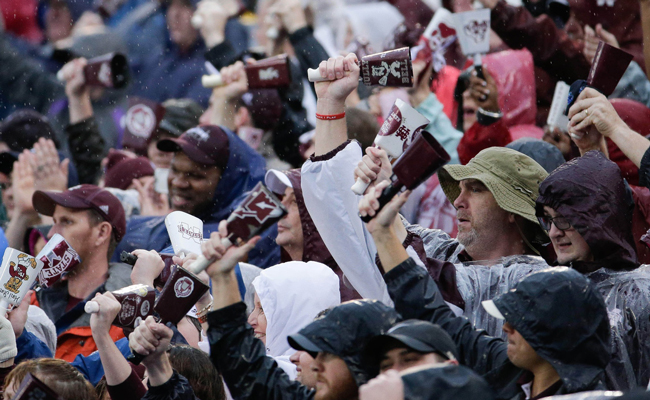
Football is a developmental sport that fundamentally is about talent maximization. Teams can rank highly in recruiting cycle-after-cycle and on the field can produce mediocre results. Conversely, teams can rank not-so-high and produce better results on the field.
This is due in large part to talent maximization.
Why is Alabama sitting on four national titles during the era of current head coach Nick Saban? Because he and his staff not only sign prospects with elite potential, they maximize that talent. It’s probably not very popular to heap even more accolades on the program that not only has four championships since 2009, but that also has signed the nation’s top-ranked recruiting class five cycles in a row, but the reality is that the Tide gets the most out of its collection of uber-talented recruits, perhaps more so than any other program.
Ole Miss, in recent years, also has maximized quite well. Four of the Rebels All-SEC selections this past season — tight end Evan Engram, defensive end Marquis Haynes and defensive backs Mike Hilton and Trae Elston — were rated less than four stars coming out of high school. All had the talent to be who they became, but the coaching staff in Oxford had a lot to do with getting them there and quite frankly does not get enough credit for getting the most out of their players.
Beyond the Tide and Rebels, two programs this decade stand out as talent maximizers — Missouri and Mississippi State. Rarely do the Tigers or Bulldogs rank highly in recruiting, yet Missouri won back-to-back SEC East titles in 2013-14 and Mississippi State won a combined 19 games the last two years. These two programs are perhaps the best examples of “maximization” when you think beyond the programs that annually sign a bunch of no-brainer talent.
Missouri’s success prior to last season (and even last season the issues were on offense, not defense) is directly linked to the Tigers ability under former head coach Gary Pinkel and former defensive line coach Craig Kuligowski to identify, evaluate, sign and develop defensive linemen. Case in point: Michael Sam and Shane Ray were not four-star prospects. Markus Golden was a running back in high school and a linebacker in junior college. This happened over and over and was one of the least-discussed, yet impressive, storylines in college football. This greatness on the defensive front allowed Missouri to be successful in its transition from the Big 12 to the SEC, where ability on the defensive line is paramount.
The question now becomes whether it will continue under new head coach Barry Odom and whomever Missouri hires to coach its defensive line. Given Odom’s history with the Missouri program (he’s an alum who played for Pinkel), odds are high that it will.
With the Bulldogs, the plan (and it has worked) has been to sign their share of no-brainers from within Mississippi and then make great evaluations to fill out the class. Dak Prescott and Josh Robinson were two under-the-radar guys out of Louisiana. Preston Smith was from the Atlanta area. They landed De’Runnya Wilson out of Wenonah High in Birmingham, Ala, the list goes on and on. It’s not just about recruiting here, though, the coaching staff had to develop them and maximize the talent that they saw when they recruited them and in all situations it worked out.
So many times fans don’t understand why a school recruits at a high level and then there are mediocre results on the field. The fundamental reasons are specific to each team in each season, but if you dig in, most of the time it’s linked back to a failure to maximize talent and that is far more important to winning football games than achieving any sort of high team recruiting ranking.
Recruiting writer for Saturday Down South







